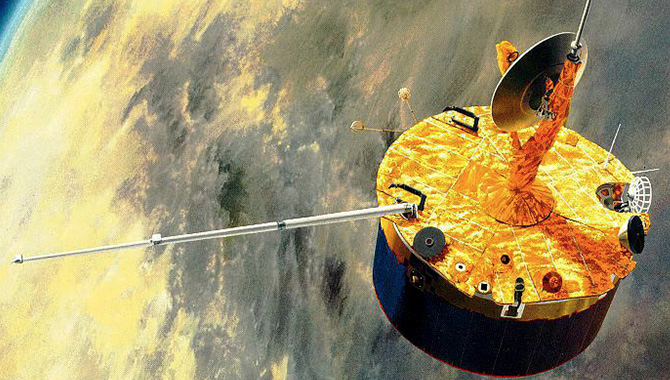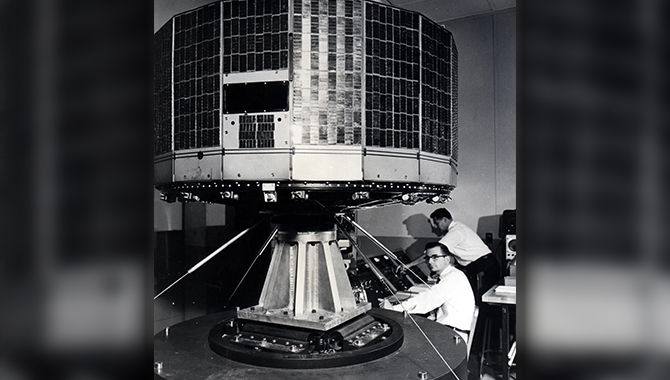
An artist’s conception of the Pioneer Venus Multiprobe approaching Venus.
Credit: NASA
NASA’s probe mission quantified the toxic atmosphere of Venus, Earth’s closest planetary neighbor.
Forty years ago this month, on August 8, 1978, NASA launched a multiprobe bus atop an Atlas-Centaur rocket, the workhorse of the American space program, heading for Earth’s closest neighbor in the solar system, Venus. Because Venus is close to Earth and one of the brightest objects in the night sky, it has captured the human imagination for millennia.
Venus was once thought to be a twin of Earth, in part because of its similarity in size and mass. Scientific exploration quickly revealed how dissimilar the planets are. Venus rotates in the opposite direction from Earth, with a single day there lasting 117 Earth days. A Venusian year is just two Venusian days long. Meanwhile, the atmosphere is a thick, toxic mix of sulfuric acid clouds moving through carbon dioxide. The atmosphere traps the sun’s heat, driving the temperature at the planet’s surface to more than 850 degrees Fahrenheit.
To learn more about this inhospitable neighbor, NASA sent the Pioneer Venus Multiprobe, a cylindrical space craft, about 8 feet in diameter, weighing approximately 640 pounds, to penetrate the atmosphere and report back data until it was destroyed by harsh conditions.
The main spacecraft, known as “the bus,” was equipped with four separate probes—a large probe and three smaller ones, which were about 2.5 feet in diameter. These probes were released in November, as the spacecraft approached Venus. The probes were equipped with a suite of instruments to measure atmospheric composition, solar flux penetration, and to search for and measure cloud particles.
The bus itself was equipped with an ion mass spectrometer to gather atmospheric data that could help scientists understand its layers, dynamics, and origins as well as a neutral mass spectrometer to gather data about the interaction between the solar winds and the Venusian atmosphere and the photochemistry of the atmosphere.
The bus and probes arrived at Venus 123 days after launch, entering the atmosphere on December 9, 1978. The bus survived for one minute, reaching an altitude of 110 km above the surface. The large probe, which was equipped with a parachute, reached the planet’s surface in one and a half hours. The smaller probes landed in 75 minutes.
Although they were not designed to survive impact, nor expected to, one of the smaller probes did, transmitting data for approximately one hour from the harsh surface of Venus, where atmospheric pressure is about 90 times that of Earth.
The mission was complemented by the Pioneer Venus Orbiter, which was placed in orbit around Venus five days before the probes arrived. The measurements by the orbiter was compared to the measurements from the probes, enabling scientists to differentiate between planetary and local conditions.
The probes, two of which entered on the day side of planet and two on the night side, all measured temperatures between 838 and 858 degrees Fahrenheit. The mission found that winds reach 200 meters per second in the sulfuric acid clouds layers above the planet but were calm at the surface.









![The sunshade deployed by the crew of Skylab 3 showing the folds Pilot Jack R. Lousma wrestled with in zero gravity.]](https://appel.nasa.gov/wp-content/uploads/2018/09/Skylab-3.jpg)